As a sleep deprived parent stuck in the zombie days with your baby, it’s hard to sift through alllllllllll of the different posts about creating the perfect sleep space for your baby.
So as a Baby-Led Sleep and Well-Being Specialist, I decided to put together my best tips for creating the perfect sleep environment that’s unique to your baby’s normal biological needs, specific personality, and distinct preferences.
Use these tips to set up your baby’s sleep space so your entire family can start sleeping better before you know it.
Four Key Tips for Designing the Perfect Sleep Space for Your Baby:
- Darken the room.
- Adjust the temperature.
- Add a little white noise.
- Find the best sleep location.
⭐ Quick Tip: If you’re in a hurry, scroll through to find the quick sleep tips you can try out right now. Then save this post and come back later to read the rest of the article and create the most personalized sleep space for your baby.
Jump To:
💡 Decide how dark your baby's room should be. 🌡️ Adjust the temperature to help your baby sleep better. 🔉 Determine the best noise level for your baby to sleep. 🗺️ Find the best sleep location to support your baby's sleep. 💭 Final Thoughts
4 Important Ways to Create Your Baby’s Perfect Sleep Environment:
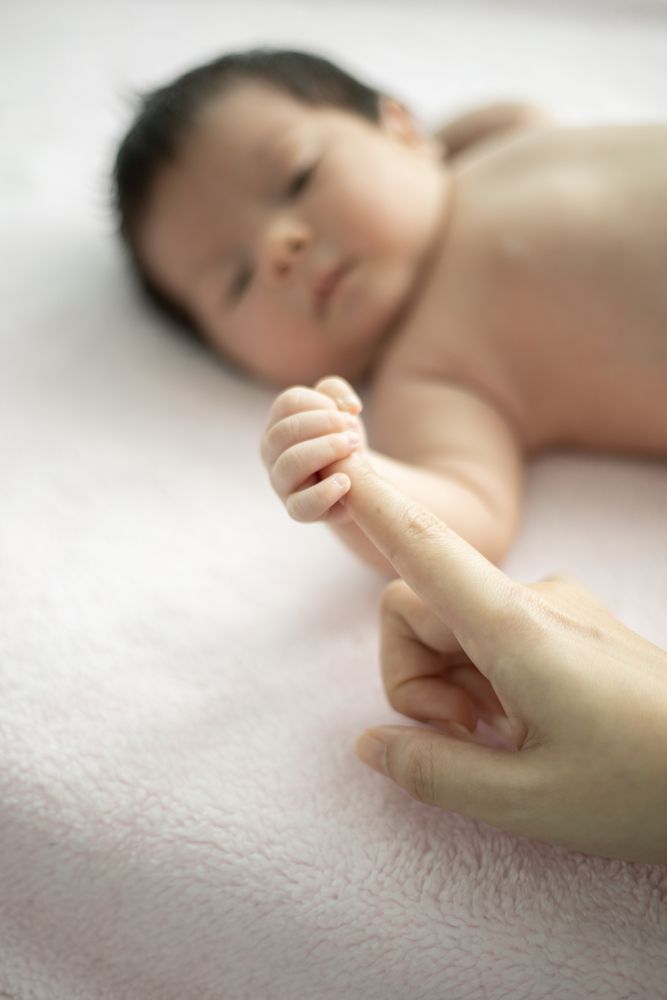
1. Decide how dark your baby’s room should be.
⭐ Quick Tip: Try making your baby’s room pitch black overnight (so dark you can’t see your hand when you hold it out in front of your face).
For both babies and adults, our internal biological clock is set by light and darkness.
When we turn out the lights, we encourage the production of melatonin, our sleep hormone. On the other hand, when we’re exposed to artificial light, this stops or slows down melatonin production for up to 90 minutes.
It’s important to expose your baby to natural light during the day.
This signals to your baby that it’s daytime and time to wake up.
Since your baby will be alert and active during wake windows, it gives your baby the chance for sleep pressure to build up and actually be tired enough for good, restful sleep at naptime and bedtime.
Should the room be dark or bright during naps?
Good news, this might be less important than you might think.
Although a lot of sleep trainers like to say that it has to be 100% pitch-black to nap, there are many, MANY babies around the world who sleep in the sunshine without any curtains or dimming and they nap just fine.
With that being said, if your baby is struggling to nap, it can be helpful to darken the room to more clearly signal that it’s time to sleep and prevent distraction or overstimulation at nap time.
Dim the lights at bedtime.
Because darkness releases our sleep hormones and signals that it’s time to sleep, do your best to dim the lights and darken the room near your baby’s bedtime.
You can start dimming the lights in your home after supper and keep the lights low throughout your nighttime routine to boost melatonin production. This gives your baby those important cues that it’s time to get ready for bed.
When you put your baby to bed at night, try to make the room as dark as possible before walking into the room. For most babies, making it “middle-of-a-cave/can’t-see-your-hand” dark creates the ideal sleep environment overnight.
If you can, also try to keep your baby’s sleep space as dark as possible during overnight wakings to prevent overstimulation or signaling that it’s daytime. Especially if your baby is highly sensitive or easily stimulated by lights.
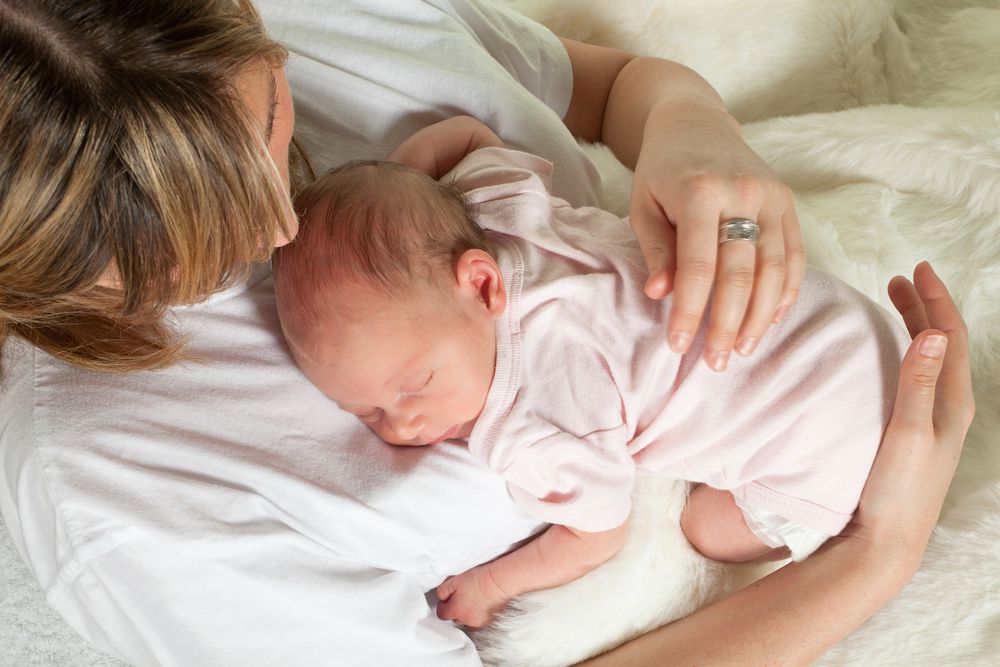
If your baby is used to napping in the dark, will they struggle to nap when it’s not pitch black?
I get it. This is a really common concern. It makes sense that parents worry that your baby will get used to the dark and only be able to sleep this way.
But here’s the thing.
Some babies are more particular to light levels than others, just like some adults are more sensitive to this.
Personally I need complete and total darkness to sleep. A light all the way on the other side of the house will keep me awake. But my husband could sleep through a strobe light party and not have it impact his sleep.
Maybe your baby is like my husband and even if they always sleep in complete darkness, your baby might do just fine sleeping at day care or while running errands.
And if your baby is more like me and naturally bothered by light while they sleep, you can build in other ways to support their sleep when you’re away from your normal sleep space.
I say this to reassure you that by tuning into your baby’s biology and making the room darker if you can, you’re not creating bad habits or setting them up for failure. You’re helping them to sleep better and creating the ideal sleep space in your home for days that you’re not out and about.
2. Adjust the temperature to help your baby sleep better.
⭐ Quick Tip: Make sure to dress your baby for the temperature they are sleeping in.
Have you ever had a hard time falling asleep because your room was too hot? Or you just couldn’t warm up enough to relax and fall asleep?
That’s because the temperature of our sleep space can make it easier or harder to fall asleep and stay asleep and this is true for our babies too.
Before we jump into information about the “ideal” sleep temperature, remember that there are babies all around the world without air conditioning or heaters. And they’re able to sleep just fine.
Setting the ideal temperature isn’t the end-all-be-all of fixing your baby’s sleep problems, but if you can adjust the temperature, it’s easier to set the conditions to lull your baby to a restful sleep.
What is the ideal temperature for your baby’s sleep?
Experts say that the optimal sleep temperature for babies is between 64 to 72 degrees Fahrenheit (18 to 22 degrees Celsius).
Because babies aren’t as adaptable to temperature changes as adults, it’s important to listen to your gut and look for cues that your baby is too hot or too cold.
It’s also important to dress your baby for the temperature that they’re sleeping in, especially if your baby’s room is warm, since overheating can be dangerous for your baby.
Signs That Your Baby’s Room is Too Cold
- Restlessness and moving around the crib while sleeping
- Prefers tummy sleeping
- Hands tucked into the body
- Frequent overnight wakings and wanting to be held
- Waking between 4:00 am and 5:00 am
- Cat napper
- Back of their neck feels cold
It’s important to note that many of these can be signs of other sleep interrupters as well. So listen to your gut.
If the back of your baby’s neck feels cold, they’re showing these signs, and their room feels cold, try adjusting the temperature to warm up the room a little or add in another layer of clothing (like putting a onesie on under their pajamas).
If your baby’s neck doesn’t feel cold or their room seems warm, try looking for other reasons why you may be seeing these sleep red flags with your baby.
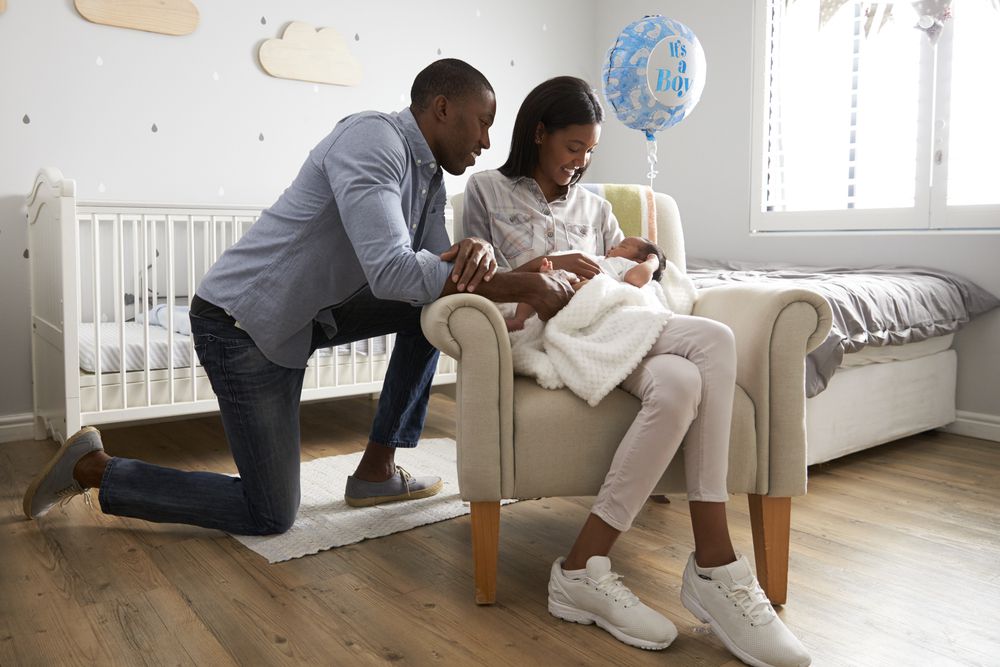
Signs That Your Baby’s Room is Too Warm
- Sweating and hot around their neck or back
- Breathing quickly or taking shallow breaths
- Frequent overnight waking
Remember that if the room is too hot, your baby could overheat. And being too hot and overheating can be dangerous for your baby, including increasing the risk of Sudden Infant Death Syndrome (SIDS).
If your baby seems too hot at night, try decreasing the temperature or removing layers of clothing and sticking with breathable fabrics for their sheets and sleepwear.
How Should My Baby Dress Overnight?
When it comes to picking out how much or how little clothing to put on your baby overnight, it’s best to listen to your instincts and dress your baby for the temperature they’re sleeping in.
As a general rule of thumb, your baby will sleep in one extra layer than you would be comfortable sleeping in.
- If you’re sleeping in shorts and a t-shirt, try picking long sleeves and pants for your baby.
- If you’re sleeping in long sleeves, try putting on a heavier set of footie pajamas or layering a onesie under your baby’s pajamas.
Also look for breathable sheets and sleepwear, such as organic cotton and bamboo and clothes or clothing with a TOG rating that aligns with the room temperature of your baby’s sleep space.
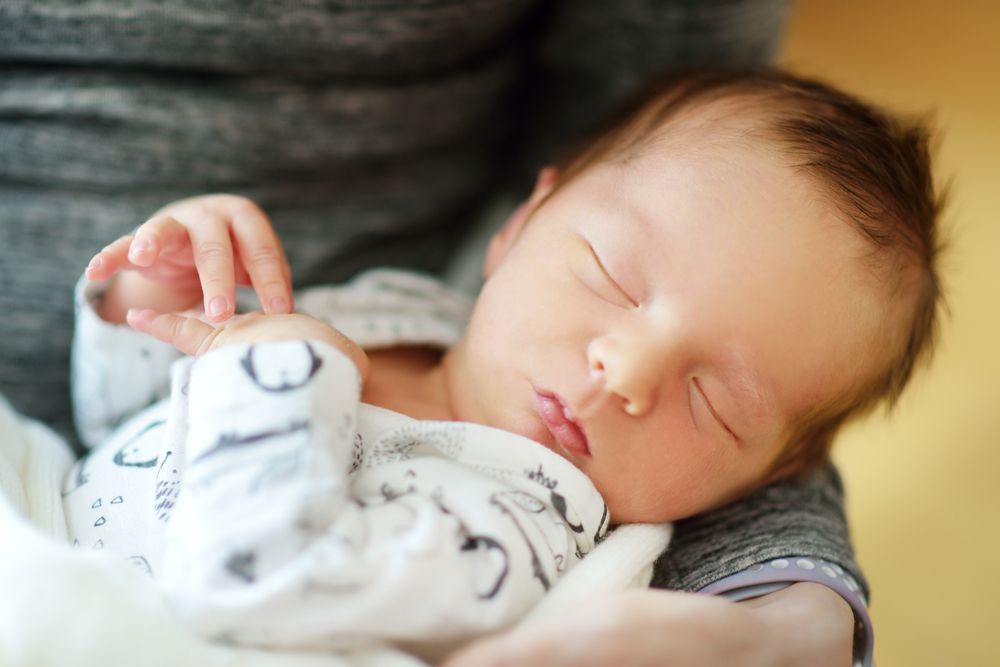
3. Determine the best noise level for your baby to sleep.
⭐ Quick Tip: Experiment with white noise and tune in to whether your baby finds this soothing or distracting.
It’s true that some sudden noises can wake your baby and you’ve probably heard that using white noise will help your baby to sleep better.
Although this is certainly true for some babies, how helpful white noise is really depends on your baby’s personality.
How does white noise help your baby’s sleep?
White noise is designed to block out other noises while your baby is in the light REM phase of sleep – like creaky floors, the TV, sounds of the dishes, siblings, etc.
For some babies, especially those with high distractibility, white using a white noise machine blocks out those distracting noises and helps them to sleep better.
How does white noise hurt your baby’s sleep?
Remember, all babies are unique and they all have different preferences – again just like adults.
My husband prefers to always have the TV on when he sleeps. My younger sister needs a fan on high or she can’t. But for me, I can’t sleep if there’s any music or TV and am impartial to fans in the room.
For some babies, adding in white noise can be overstimulating or distracting and they can actually prefer quieter rooms while they’re going to sleep.

How loud should your white noise be?
Just like Goldilocks, if you’re using a white noise machine, you don’t want it too loud or too soft. You want it juuuuust right.
Try adding in a soothing sound at about 50 decibels (about the volume of a running shower). If it’s too loud for you, it’s too loud for your baby.
Then watch to see if your baby seems to find this soothing or distracting.
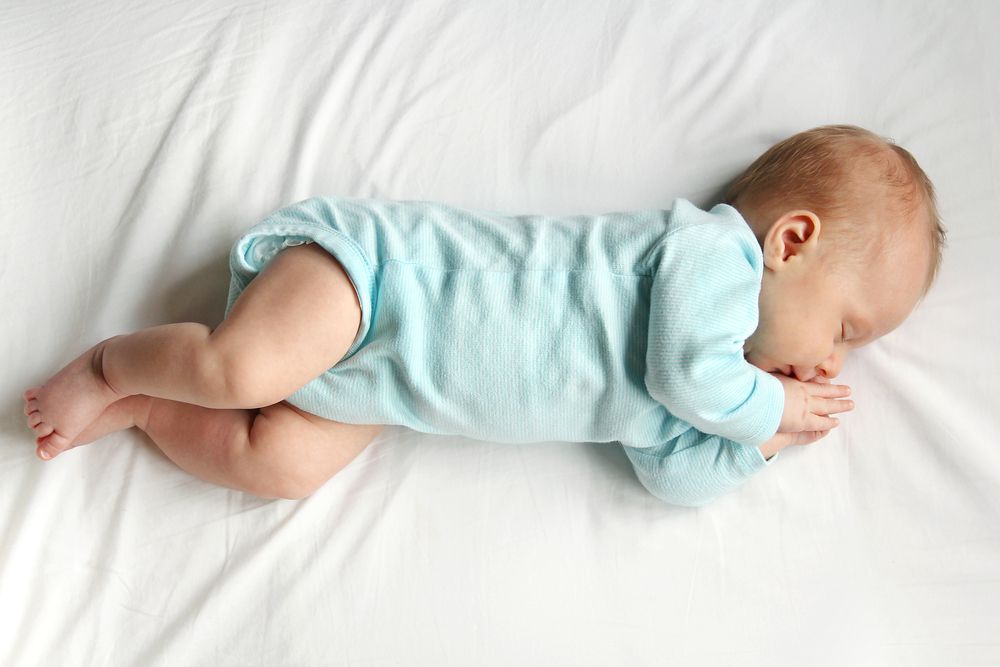
4. Find the best location to support your baby’s sleep.
⭐ Pro-Tip: Build in ways to help your baby feel connected to you while they sleep while creating a calming, peaceful sleep space.
The final step of creating the perfect sleep environment that’s unique to your baby is to find the best place to support your baby’s sleep.
Typically your baby will sleep in one of four places:
- Cuddling or babywearing with a caregiver
- Crib or bassinet in your room
- Crib or bassinet in their room
- Bedsharing in family bed or floor bed
Most babies will sleep best cuddling with you.
Remember, your baby needs contact, closeness, and proximity to feel safe and get their attachment needs met. And this is especially true during the first year.
If your baby is struggling with short naps or will only sleep if you’re holding during naps or overnight, they’re telling you that their favorite place to nap is cuddled in your arms.
Consider taking a break and enjoying these sweet cuddles with your baby.
Practice a little self-care and make nap times time for you to sit back and read a book or magazine, eat a snack, listen to music, and relax while holding and cuddling your baby.
Invest in a good baby carrier and baby wear your baby while walking or doing things around the house.
Or practice safe bedsharing and use your baby’s naptime as a time to snuggle and take a nap with them or reduce overnight wakings and the time it takes to put your baby back to sleep by bedsharing and nursing overnight.
Since your baby is biologically designed to want to nap with you, this is the easiest way to set a sleep environment that your baby loves.
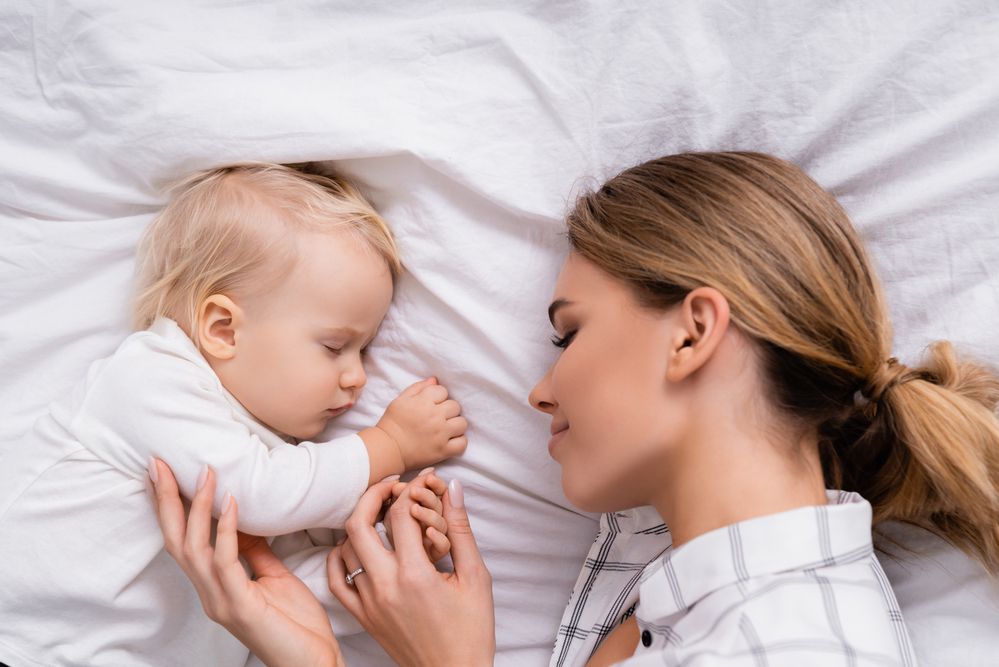
Be patient and build in attachment other ways if your baby is sleeping in the crib or bassinet.
If bedsharing, babywearing, or cuddling doesn’t work during some or all of your baby’s naps or bedtime sleep, that’s okay. Remember, you want to do what works for you and change what doesn’t work.
If your baby is sleeping in a crib or bassinet, whether in your room or in their own room, just be patient and understand that they’ll typically sleep for shorter periods of time or need a little extra support falling asleep than if they were physically touching you.
Consider adding in other ways to help your baby feel like they’re in contact with you, like holding their hand or rubbing their belly until they fall asleep, making the bedsheets smell like you, keeping your crib right next to your bed overnight, or introducing a lovey (for older babies).
Set up a crib space that’s safe.
Whether your baby’s crib or bassinet is in your room or their own room, it’s also important to set up the sleep environment so that it’s safe and not too stimulating.
When it comes to crib (or bassinet) safety:
- Keep your baby’s crib within an arm’s length of you, especially during the six months to decrease the risk of SIDS.
- Make sure there are no toys, blankets, pillows, or bedding inside your baby’s crib.
- Keep the crib away from windows and curtain strings.
Create a sleep space that’s calming and supports sleep.
As parents, sometimes we can forget that our baby’s sleep space should be conducive to sleep.
If you have lots of bright colors or stimulation around your baby, it will probably be harder for them to fall asleep. Just like it’s probably harder for you to fall asleep in a bright busy room, than a soothing, calming spa.
When setting up your baby’s sleep space, try not to have too stimulating of a bedroom and remember that Mobiles over the crib and bright bedrooms can be stimulating and impact how well your baby sleeps, especially after the 6 month mark.
Final Thoughts:
When creating the perfect sleep space, try to factor in your baby’s unique preferences and personality to create the environment that helps your baby sleep best.
Darken the room to increase melatonin production and signal that it’s time to sleep.
Pay attention to signals if your baby is too warm or too cold and dress your baby according to the temperature they are in.
Consider using a noise machine to see if that helps your baby tune out other, more distracting noises.
And create a sleep space that is calming, not too stimulating, and helps your baby feel connected to you.
